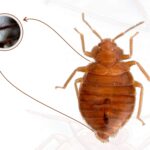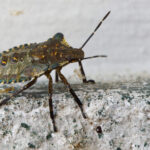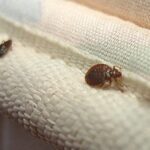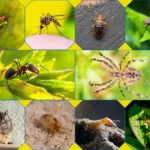Everybody wants a bug-free environment. These little creatures, however, are unwilling to leave us. They always manage to live rent-free in our home, but if they cause any damage to it or our garden, then we will kill them for sure! A clever fact about them is that they are tiny enough, and sometimes we cannot identify them. Our surroundings are filled with insects and pests. Most plant lovers encounter tiny black bugs that look like poppy seeds in their gardens or plants, so always remember, folks, even though they may seem small, they have the potential to cause serious damage to you, your pet, and your plants.
The majority of these pests cause damage to your house, allergic reactions, and painful insect bites. Never forget that “The degree of damage a bug will cause is not determined by its size.” I suppose I’ve frightened you enough, but don’t worry; we’re here to assist you and to tell you about these eerie, odd, and tiny little black bugs that look like poppy seeds. Let’s now discuss the appearance of these little monsters, the harm they are capable of doing, and how to stop them.
Little Black Invaders
In our surroundings, several tiny little black bugs look like poppy seeds which can harm indoor and outdoor plants. Mostly these insects are plant destroyers. These small black dots, like bugs, can also attack people but mostly harm plants.
Some bugs, for example, moss mites or ladybugs, are not harmful to people or plants. Although you may encounter insects such as ticks or bedbugs, there is no need to be alarmed as they pose no harm to you or your pet. However, it is important to note that these insects can pose serious health risks to both you and your pet. But fear not, as we are here to guide you through effective ways to avoid dealing with these pesky insects.

18 Types of Black Bugs that Look Like Poppy Seeds
Countless little black bugs have the potential to enter your house and garden uninvited. Black Aphids, Vine Weevils, Thrips, and Flea Beetles are a few of them. Yes, bugs do have names. Although they are all black, this does not mean that they are nameless. Similar to their names, they differ in terms of their appearance and degree of damage.
- Aphids.
- Black Vine Weevils.
- Thrips.
- Flea Beetles.
- Bed Bugs.
- Drugstore Beetles.
- Spider Mites.
- Ticks.
- Moss Mites.
- Fleas.
- Fungus Gnats.
- American Spider Beetles.
- Black Oriental Cockroaches.
- Carpet Beetles.
- Booklice.
- Bird Mites.
- Mold Mites.
- Poppyseed Weevils.
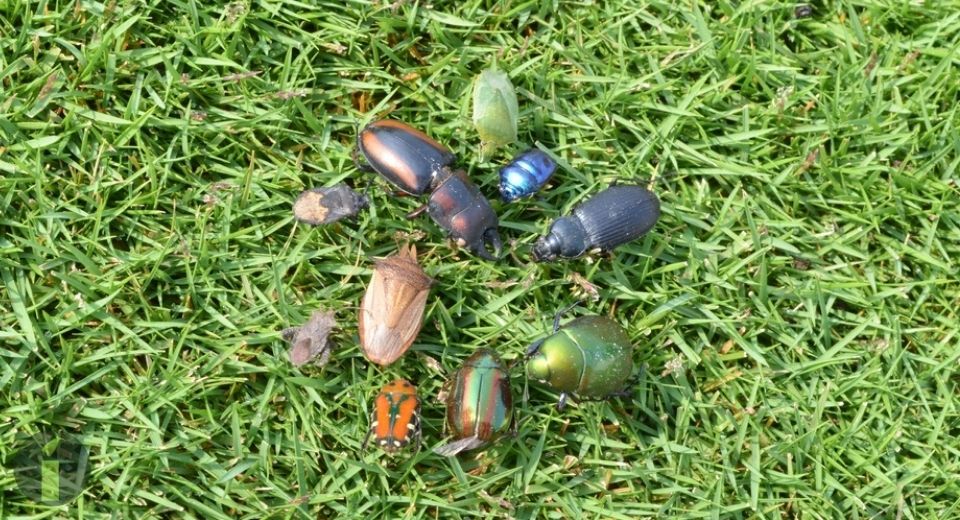
There are different kinds of Aphids in which the black citrus aphid (Toxoptera aurantii) and black peach aphids (Brachycaudus persicae) are the most common and they resemble tiny black bugs that look like poppy seeds. They are not longer than 4 millimeters. In addition to causing damage to indoor and outdoor plants, aphids emit honeydew, which draws ants’ attention. These little black Aphids like to feed on your precious plants, which causes severe damage and, as a result, leaf deformities, and the plant is induced by viral infection. All aphids survive by feeding on plants’ sap.
Life Cycle of Aphids
Aphids are most active in the spring and fall. The eggs on the plant (main host) hatch in the spring, resulting in the first generation of aphids. All of the aphids that hatch from the winter eggs are female. During the spring and summer, many generations of female aphids are born. A female may survive for 25 days and generate up to 80 new aphids.
How do Aphids Cause Disease?
These tiny monsters have the potential to propagate lethal plant viruses. They weaken the plant internally and cause leaf bending and, in extreme cases, leaf loss. Aphids also deliver poisons into the plant, disrupting its growth which results in producing damaged fruit and limited plant development.
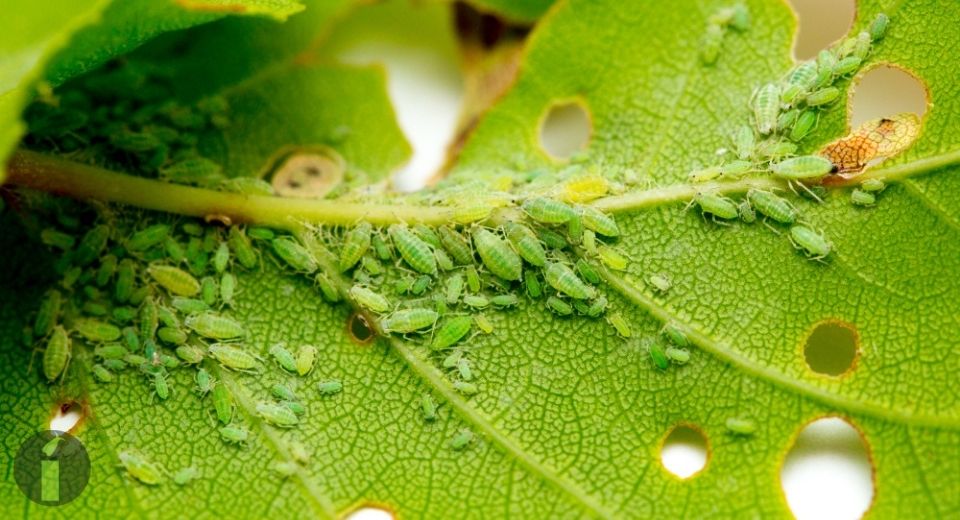
How to Get rid of Aphids?
Every problem has a solution. Although these tiny black bugs look like poppy seeds they can be killed. Although they resemble poppy seeds, they are not as beneficial. They are toxic to our beloved houseplants and gardens. However, you can get rid of them by following these suggestions;
- Put one of the aphid-repellent plants near plants that are more prone to aphid attacks. These aphid-repelling plants are lavender, lupine, mint, and nettle. You can plant these to keep aphids at bay.
- Secondly, if aphids are already in the garden and attacking the plants, apply neem oil on the affected plant, which is both natural and harmless.
- Thirdly, chemical insecticides are often sprayed on plants for the instant killing of aphids. They are absorbed by the leaves and are transferred to the tips of the leaves, where these tiny aphids prefer to live and eat peacefully.
Hurry and use these solutions on your aphids-affected plants before it’s too late!
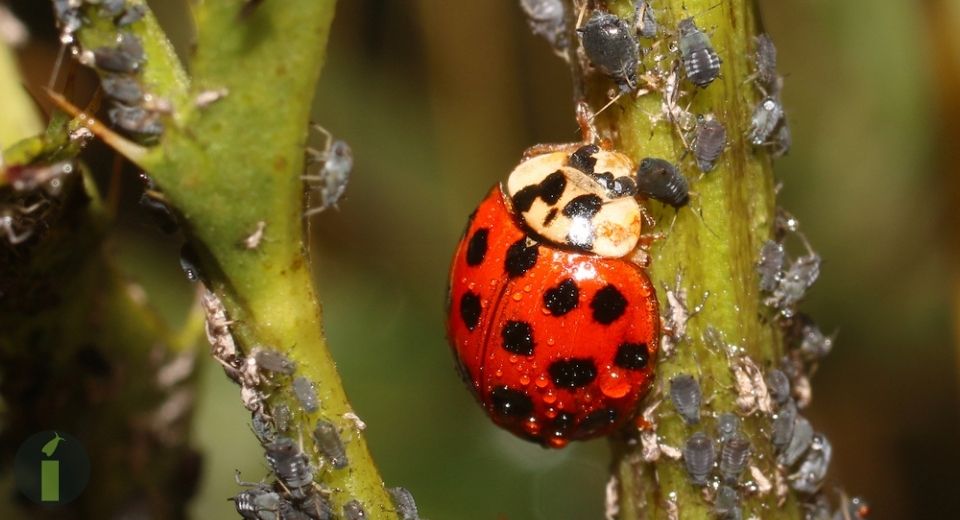
Black vine weevils are also tiny black bugs that look like poppy seeds, they seem most similar to poppy seeds. Their scientific name is Otiorhynchus sulcatus and it is endemic to Europe but they can also be found in North America. They have oval, slender bodies with long snouts. Their shells are firm and polished, with a ribbed pattern and numerous little dot-like imprints on their shell.
The black vine weevils are harmless to humans and pets; however, it does cause severe damage to plants. These black vine weevil larvae eat plants and can cause severe crop damage.
Life Cycle of Black Vine Weevils
These larvae grow in the soil’s root zone and feed on the roots. They have no legs when they hatch and develop to be about 12 mm long. Depending on the temperature, the life cycle of black vine weevils lasts 30 to 40 days in the summer and 123 to 148 days in the winter.
How Can Black Vine Weevils Harm Plants?
These tiny black bugs that look like poppy seed Weevils do not spread any disease to humans or animals. However, plants are greatly affected by them. Weevils’ larvae most harm plants. They are white, C-shaped grubs that feed onto plants by tunneling into their roots. Leaves frequently wilt (even when adequately hydrated), and plants may get dwarfed or perish. Larvae may also encircle the main stem just below the soil level.
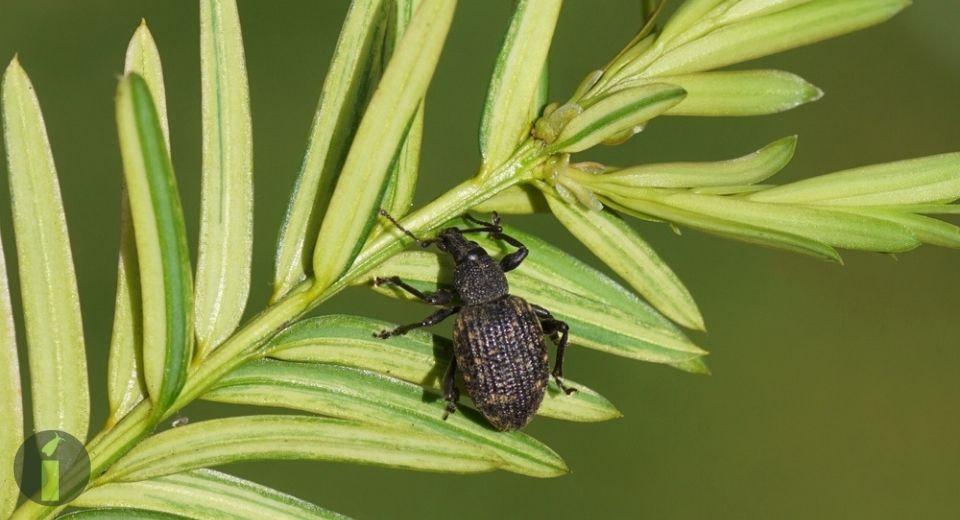
Can Black Vine Weevils Harm Humans?
Fortunately, these tiny black vine weevils are not harmful to human beings. They do not spread any severe disease or infection to humans.
How to Get Rid of Black Vine Weevils?
Pesticides can be sprayed as a drench on the soil surface or plant to control black vine weevil larvae or adults.
- Imidacloprid is an insecticide that may be applied to the Weevils-affected plants as a soil injection or spray.
- If your plant is already attacked with adult weevils, then Scimitar & Demand and Talsta insecticides are effective.
- Aloft insecticide is a useful product to prevent Weevils.
- Neem oil, diatomaceous earth, or sticky traps can be used to get rid of these black bugs.
Thrips
Thrips are tiny organisms approximately the size of a sewing needle. They feed on a variety of plants all over the world. Thrips, also known as Thysanoptera or thunder flies. They are little monsters that suck on plants and, in return, harm them. Thrips may look tiny, but the consequences can be far-reaching when they transfer viruses to plants.

Thrips do resemble brown or black seeds from a distance but actually, they are not. These bugs are another example of tiny black bugs that look like poppy seeds. There are approximately 6,000 species of thrips worldwide, busy destroying nature but do not worry, they can be killed using insecticides, and we will help you through it.
Life Cycle of Thrips
The life cycle of a thrip is determined by its species, location, plant, and other variables. Adult thrips spend most of their winters in plant waste, bark, or other materials. They get active in the early spring and lay their eggs in plant tissue. These eggs hatch within 3-5 days approximately, and then these nymphs eat for 1-3 weeks before resting for about 1-2 weeks to molt. Thrips can have up to 15 generations each year. The fully grown thrips have a lifespan of one month.
How Thrips Cause Damage To Plants?
In Early spring, when thrips are active, they feed on plants in groups sucking the sap out of them. Thrips usually suck plant cells; they not only feed on one plant but like to taste different plants such as flowers, fruits, and shady trees. Their damage causes streaks, silvery speckling, and little white spots on the plant. Both adults and the larvae thrips are attracted to white, yellow, and other light-colored blossoms and are responsible for spreading tomato spotted wilt virus and impatiens necrotic spot virus. If you have a thrips infection, your plants may be stunted and wilted, with damaged flowers and fruits.

Are Thrips Harmful To Humans?
These bugs attack people in search of moisture on the skin, which might cause minor irritation or itchiness. If you walk barefoot on the grass, you may come across something like this, although they are not harmful to humans. Thrip bites usually cause only minor discomfort and have no long-term consequences.
How to Get Rid of Thrips?
These tiny black bugs that look like poppy seeds are so many. As mentioned above, they are tiny and toxic for plants. Although thrips are large in numbers, yes, we can get rid of them, and there are easy methods for killing them;
- Use sticky traps to keep thrips numbers under control.
- Spray the thrips-infected plants with pesticides. Thrips should be killed by spraying the plants twice, three days apart.
- Dormant oil (neem oil) should be sprayed on fruit trees. These oils will kill them by suffocation.
- Lastly, use diatomaceous earth to dust the undersides of leaves.
Flea Beetles
Flea beetles are also tiny black bugs that look like poppy seeds. These insects eat plants’ leaves and stems. The flea beetle often produces 1/8-inch holes in the leaves. However, flea beetle larvae do less plant damage than adult flea beetles. Flea beetles can range in color from black to copper and brown to metallic grey, and some of these insects have stripes. All flea beetles have big back legs for leaping, especially when agitated.
Flea beetles all over the world feed on specific types of plants, but there is one species that is pale-striped called Systena Blanda feeds on a wide range of plants, including squash, beans, corn, sunflowers, lettuce, potatoes, and a variety of other plants and weeds.

Life Cycle of Flea Beetles
Adult flea beetles spend their winter in fallen leaves, hedgerows, and forested regions. They emerge in the early spring. An adult flea beetle is 1.57mm long. Adult flea beetles are most busy on warm, calm, sunny days. These small flea beetles feed mostly on warm, bright days, flying and dispersing around the field and attacking seedlings. However, they cease moving and feeding when the weather is cold and rainy. However, one to three generations of flea beetles are born each year.
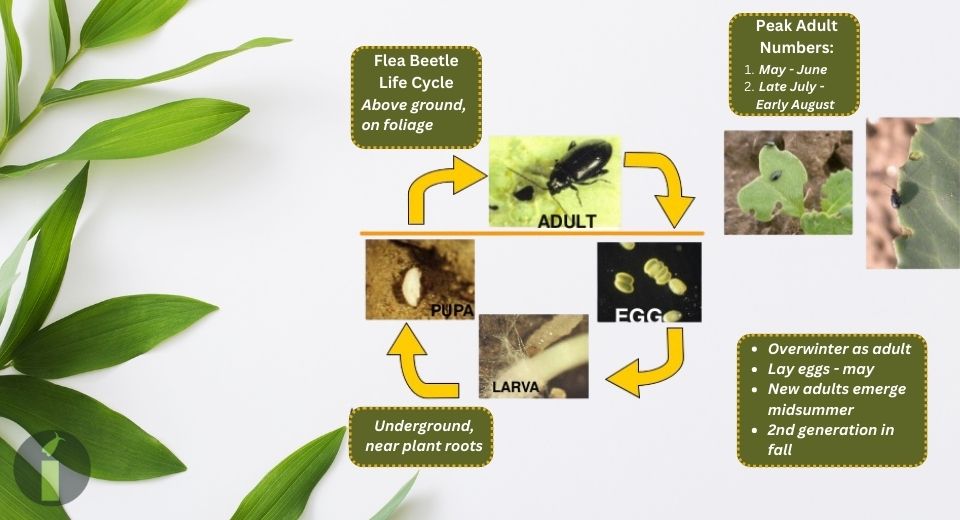
Damage Cause by Flea Beetles
Adult flea beetles are the most destructive because they eat the leaves and stems of plants. They leave shallow holes and little round, irregular holes in the leaves (typically less than 1/8 inch). Flea beetles mostly attack seedlings, and new leaves, which have a lacy appearance. They are the only bugs that can cause such type of damage to the plants.
Flea beetles cause severe harm to plants. However, the real concern is that these beetles may spread bacterial illnesses from plant to plant, such as wilt and blight, since they fly around the field while feeding on plants. Furthermore, these tiny creatures damage leafy crops such as lettuce or spinach. The holes they create might reduce the quality of the leaves.

Are Flea Beetles Harmful To Humans
No, flea beetles are not harmful to humans or any pets. They feed on plants.
How to Get Rid Of Flea Beetles?
- Dusting leaves with simple Talcum Powder. This powder helps repel flea beetles from vegetable plants, such as tomatoes, potatoes, peppers, and other plants.
- You can use sticky traps to catch flea beetles as they leap.
- Insecticides can be applied to flea-affected plants early in the season.
- Lastly, Neem oil can also be used to kill Flea beetles.
- Planting highly fragrant plants such as catnip, sage, mint, or hyssop nearby helps keep flea beetles away from crops.

Bed Bugs
Bed bugs are famous for their small size, frequently confused with small dark bugs that seem to be poppy seeds. They conceal in holes in sheet material and furniture, arising around evening time to benefit from blood. To dispose of them, wash and vacuum bedding consistently, and consider proficient nuisance control. Watchfulness is critical, as early identification can forestall an out-and-out invasion.

Drugstore Beetles
Drugstore beetles are earthy-colored seed-like bugs frequently tracked down in storage spaces and kitchens, swarming put away food items. To dispose of them, dispose of tainted things and keep your storeroom spotless and dry. Appropriate food stockpiling and fixing passage focuses are fundamental to forestall their return.

Spider Mites
Spider Mites are little vermin that might leave your plants seeming as though they have been tidied with earthy-colored seed-like bugs. Increment dampness and utilize a miticide to address their pervasion. Early mediation and a controlled climate can forestall broad plant harm.

Ticks
Ticks are little parasites frequently found in tall grass and on creatures, looking like bugs that seem to be flax seeds. To forestall tick nibbles, utilize repellent and actually look at your body and pets after outside exercises. Mindfulness and defensive measures are essential for keeping away from tick-related diseases.

Moss Mites
Moss Mites are small irritations that can pervade your nursery and may seem to be bugs that seem to be sunflower seeds. Further, develop garden cleanliness and consider regular hunters to oversee them. Making a reasonable environment can assist with holding these parasites under wraps.
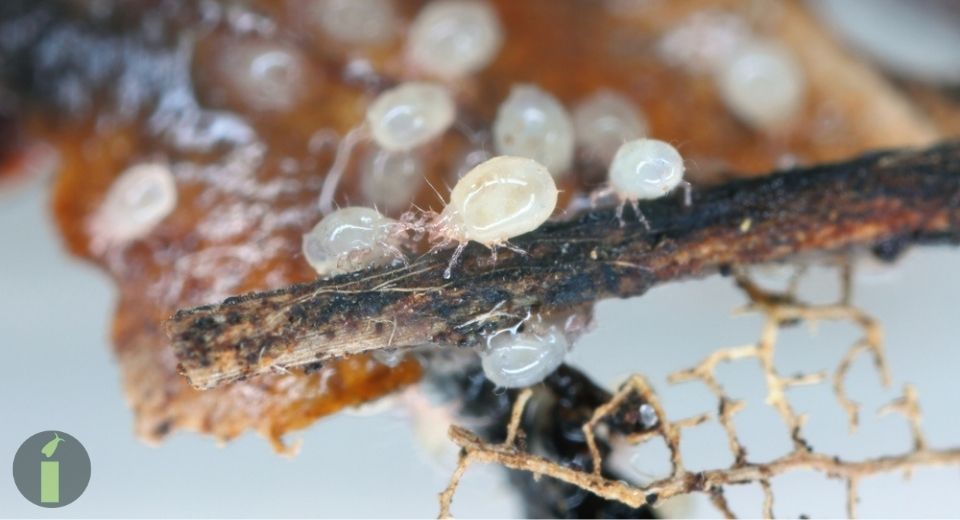
Fleas
Fleas are famous for causing irritated nibbles and can now and then be mistaken for little dark bugs that seem to be poppy seeds in bed. Wipe out insects by treating your pets and their current circumstance with suitable items. Consistency in pet consideration and exhaustive cleaning are fundamental for bug control.

Fungus Gnats
Fungus Gnats are little flying bugs frequently found around houseplants, with hatchlings that look like bug eggs that seem to be seeds. Control them by diminishing soil dampness and utilizing tacky snares. Keeping up with appropriate plant care practices can assist with forestalling parasite gnat invasions.

American Spider Beetles
American spider beetles are brown and can be confused with bugs that seem to be flax seeds in your storage room. Discard invaded food things and keep up with neatness. Normal storeroom reviews can assist with getting pervasions before they spread.
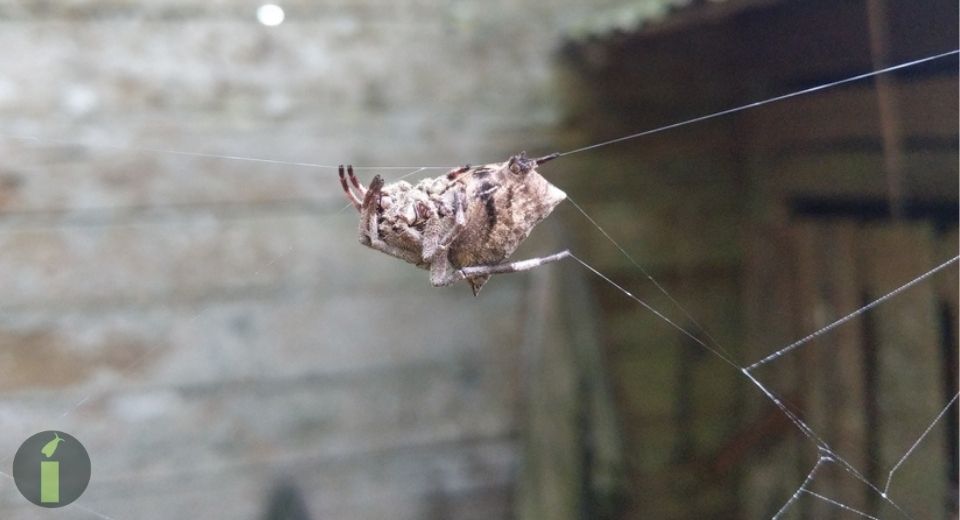
Black Oriental Cockroaches
Black weevils are nuisances that might show up as small dark bugs that seem to be poppy seeds in the kitchen. Eliminate swarmed grains and store dry products in impenetrable compartments to forestall their spread. Legitimate food stockpiling is crucial for keeping these weevils under control.
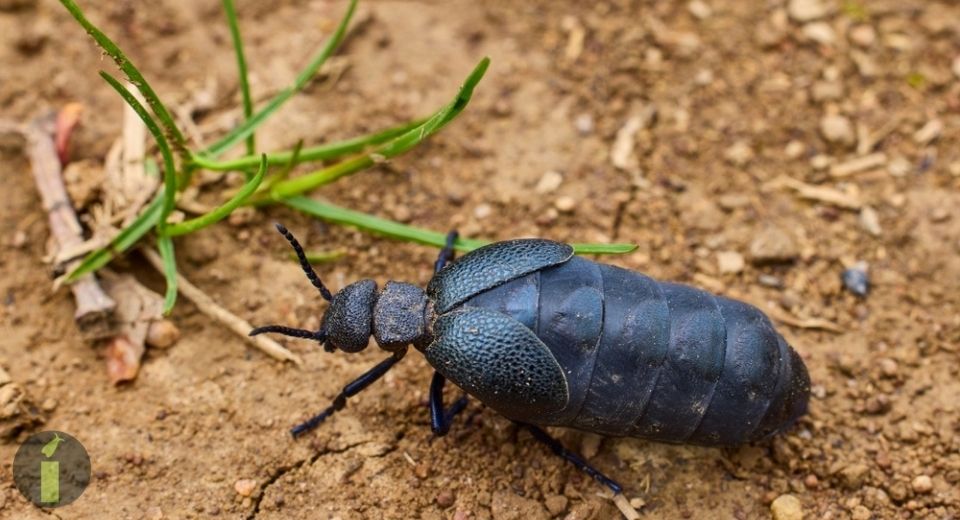
Carpet Beetles
Carpet Beetles are little, round messes that look like poppy seeds in size and shape. These little dark bugs are infamous for making harmful floor coverings, upholstery, and even dresses. Their hatchlings feed on normal strands, for example, fleece and silk, which can bring about unattractive openings and harm.
Grown-up cover insects are additionally drawn to light and can frequently be tracked down close to windows. Customary vacuuming and the legitimate capacity of materials can assist with forestalling invasions.

Booklice
Booklice, in spite of their name, are not really lice but rather minuscule bugs that seem to be poppy seeds. They are ordinarily tracked down in soggy and muggy conditions, like old books, backdrops, and put away food items.

Bird Mites
Bird Mites are very minuscule dark bugs that look like poppy seeds. They are frequently connected with bird homes, and pervasions can happen when birds forsake their homes. Bird vermin can chomp people and cause skin aggravation and distress.

To dispose of bird bugs, it’s fundamental to eliminate the wellspring of invasion (the bird home) and consider counseling a vermin control proficient for successful expulsion.
Mold Mites
Mold Mites are little bugs that are comparable in size to poppy seeds. As their name recommends, they are normally tracked down in regions with form development. These little dark bugs that seem to be poppy seeds feed on form spores and can turn into a disturbance when shape invasions happen inside.

Poppyseed Weevils
Poppyseed Weevils are little bugs that seem to be lengthened poppy seeds. These vermin can plague and put away grains, especially poppy seeds, and cause tainting and deterioration. They lay their eggs inside poppy seeds, and the hatchlings feed on the seeds, delivering them unappetizing. To forestall poppyseed weevil pervasions, store grains in water/airproof holders and assess them consistently for indications of harm.
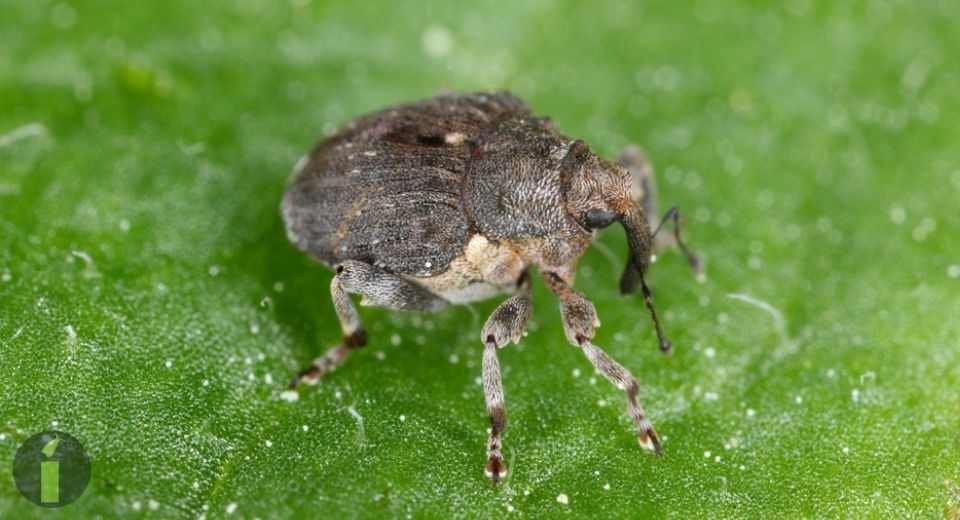
Easy Identification
| Bug Name | Shell | Shape | Damage | Characteristic |
| Aphids | Hard-shell | Pear-shape | Discoloration Leaf curling Yellowing | Waxy and wooly |
| Black Vine Weevils | Hard-shell | Oblong | Wilting of leaves | Long snout |
| Thrips | No shell | Cylindrical | Discoloration Distortion, Premature drying Shedding | Long fringes Slender membranous wings |
| Flea Beetles | Soft-shell | Oval shape | Shallow pits Irregular holes in leaves | Large back legs |
| Bed Bugs | Hard-shell | Oval shape | Itchy, red bumps, allergic reactions | Nocturnal, hide in cracks and crevices |
| Drugstore Beetles | Hard-shell | Round shape | Contamination of food | Feeds on a variety of stored food products |
| Spider Mites | Soft-shell | Round shape | Speckling, stippling on leaves | Tiny, often found in colonies on the underside of leaves |
| Ticks | Hard-shell | Oval shape | Lyme disease, other infections | Sucks blood, commonly found on mammals |
| Moss Mites | Soft-shell | Round shape | Discoloration of moss | Thrives in damp environments, microscopic |
| Fleas | Hard-shell | Flat shape | Itchy bites, transmit diseases | Excellent jumpers, feed on the blood of animals |
| Fungus Gnats | Soft-shell | Mosquito-like | Damage to roots and stems | Weak fliers prefer damp soils and decaying matter |
| American Spider Beetles | Hard-shell | Oval shape | Contamination of stored food | Brown or black, resemble small spiders |
| Black Oriental Cockroaches | Hard-shell | Oval shape | Food contamination, foul odor | Fast runners prefer warm and humid areas |
| Carpet Beetles | Hard-shell | Oval shape | Damage to fabrics, fur, and leather | Feed on natural fibers, often found in homes |
| Booklice | Soft-shell | Oval shape | Damage to books, paper | Prefer warm and humid conditions, no wings |
| Bird Mites | Soft-shell | Round shape | Skin irritation, discomfort | Parasitic, often found on birds or in nests |
| Mold Mites | Soft-shell | Oval shape | Contamination of stored food | Thrive in damp and moldy environments |
| Poppyseed Weevils | Hard-shell | Elongated | Contamination of stored grains | Infest stored grains, elongated snout |
Read More: What Do Crickets Eat? A Comprehensive Guide to Cricket Diet
Final Thoughts
Gardeners’ efforts are seen in the fruits and flowers they produce. Gardening is a labor-intensive hobby, but garden pests, such as these black bugs can be aggravating. But keep in mind that nothing can stop you from anything even if they are these tiny black bugs that look like poppy seeds. Don’t be scared if you encounter these tiny black bugs that look like poppy seeds on your plants as in this article we’ve provided easy ways to get rid of them. So by making a little effort for your plants, they will be healthy and happy.



